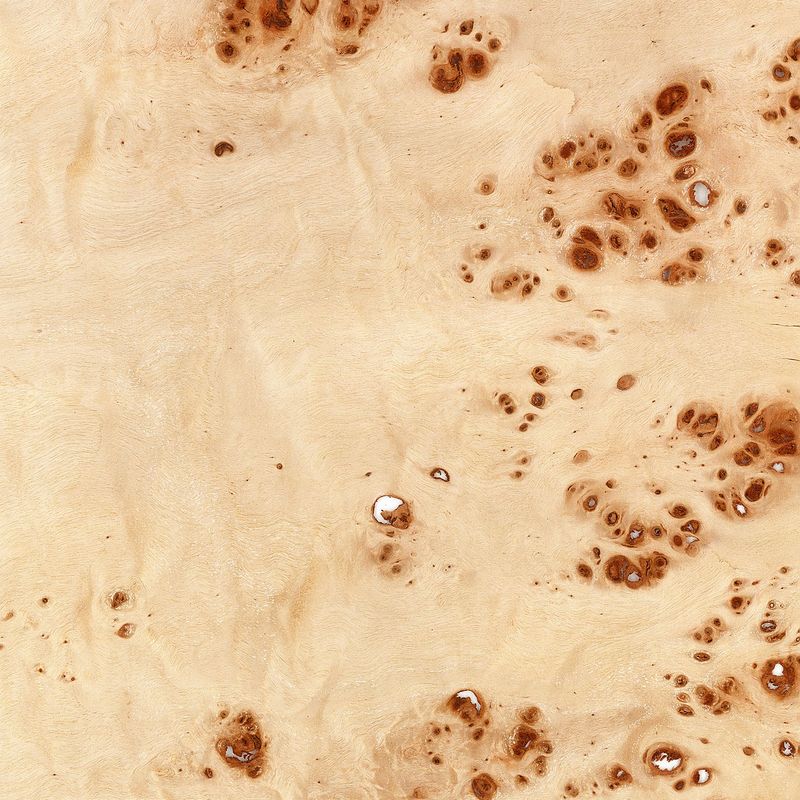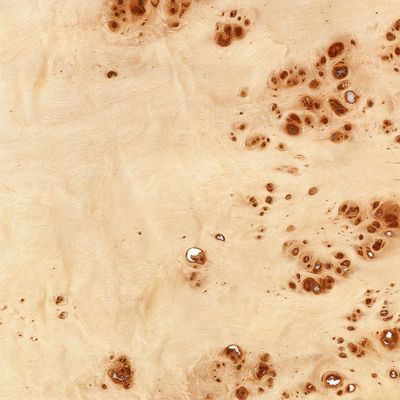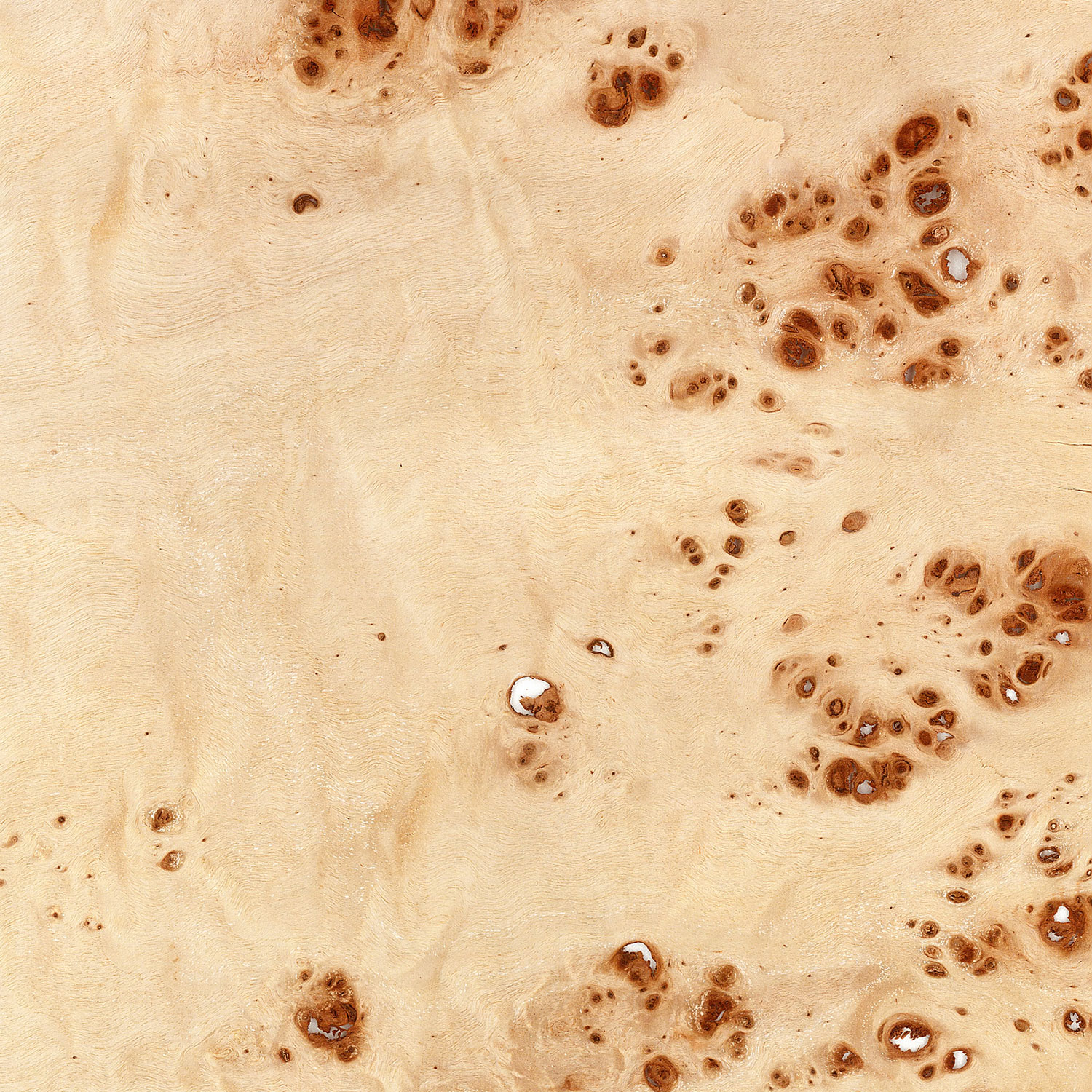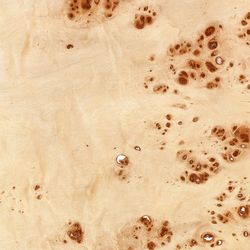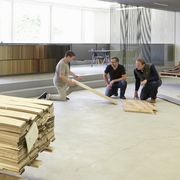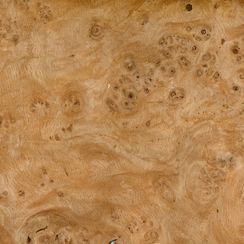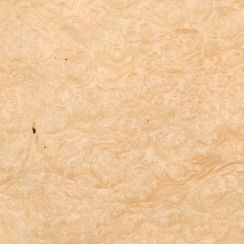Make an appointment at our concept.room for your individual project consulting
Veneer Poplar Burl
BackDetailed Description
The tree reaches heights of up to 30 m with large diameters of over 200 cm. The shaft is very straight and has a tendency to burls, which can also be found in other hardwoods. The bark is ash grey when young, but quickly develops into a strong bark, then grey-brown and strongly cracked.
Tradenames and other names
Bot. Name: Populus spp.
Tradename De: Schwarzpappel-Maser, Pappel-Maser
Tradename En: Poplar burl, Mappa Burl, Black Poplar
Properties
Raw density: 450 - 560 Kg/m3
Occurrence
The black poplar is spread all over Europe. It also grows in Turkey, Siberia, North Africa and India. The poplar has been successfully cultivated in Argentina.
Characteristic and wood color
Sapwood and heartwood are slightly different. The sapwood is white to yellowish-white, while the heartwood is light brown to brown. In structure and texture, the wood is largely similar to the other European poplar species, although it should be noted that a tangled grain develops at the mentioned burls. Likewise, the wood is very knotty in these areas. The intertwined grain produces a lively and very decorative pattern, which is why these pieces are preferred for the production of veneers.
